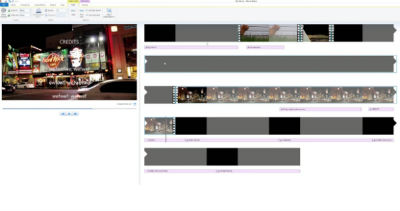
Video is an essential component of most Massive Open Online Courses (MOOCs) and other forms of on-line learning.
We successfully launched our 3rd edition of our MOOC: Videos for teaching, learning and communication by The University of Manchester. The course started on the 3rd of October and will end the 4th of December. You can still enrol!
Video content plays a central role in most MOOCs and other forms of on line learning. It is typically the main form of content delivery as well as the greatest cost driver of MOOC production.
MOOC videos tend to be structured as short pieces of content, often separated by assessment questions. Splitting videos into 2-3 minute segments or 6-minute chunks maximizes viewer engagement.

Two video production styles that are featured prominently in many MOOCs: the talking head style, where the instructor is recorded lecturing into the camera, and the tablet capture with voice-over style. Do-it-yourself (DIY) is another popular one. When choosing a production style, it is important to keep in mind the video’s goals and desired results.
Windows Movie Maker screen.
Video production, in nearly all cases, is the most expensive component of creating a MOOC, but it does not have to be. In many cases, opting for a lightweight production process is a great way to achieve educational objectives, while at the same time reducing cost.
Many smart phones and web cams are able to record in high definition, and many free on line resources exist that make the filming and editing processes accessible to non-professionals. In this course, we will share with you copyright-free resources you can use and teach you how to use them.
The relevance of quality for on-line learning videos are hard to make given the many variables and diverse populations involved.
High-quality video content might, therefore, be especially important to keep MOOC students interested in the course. The importance of a video’s production value depends on its context and audience.
This MOOC is available to individuals from all around the world, who want to teach. It is for any learner who wants to: teach or communicate via the medium of video.
Delivering content clearly on video requires a different set of skills than those required for classroom teaching. This course is also catered to those just interested in gaining Social Media Marketing Skills. You will be able to utilize the knowledge you have gained from completing the course and apply these Web 2.0 skills to create videos for teaching and communication.
A test shoot can be a valuable source of feedback for both the instructor and the production team.
Following the idea of being ‘Massive’ and starting applying your Web 2.0 skill, why not share it on your Social Media sites, with your friends, and see if they might like to join them on this course too?
We look forward to seeing you there! – Team UoMan.
Note: Article idea and some texts are taken from: Hansch, A., McConachie, K., Hillers, L. and Prof. Dr. Schildhauer,T. (2015). TopMOOC Research Project .
‘The Role of Video in Online Learning: Findings From the Field and Critical Reflections‘.

